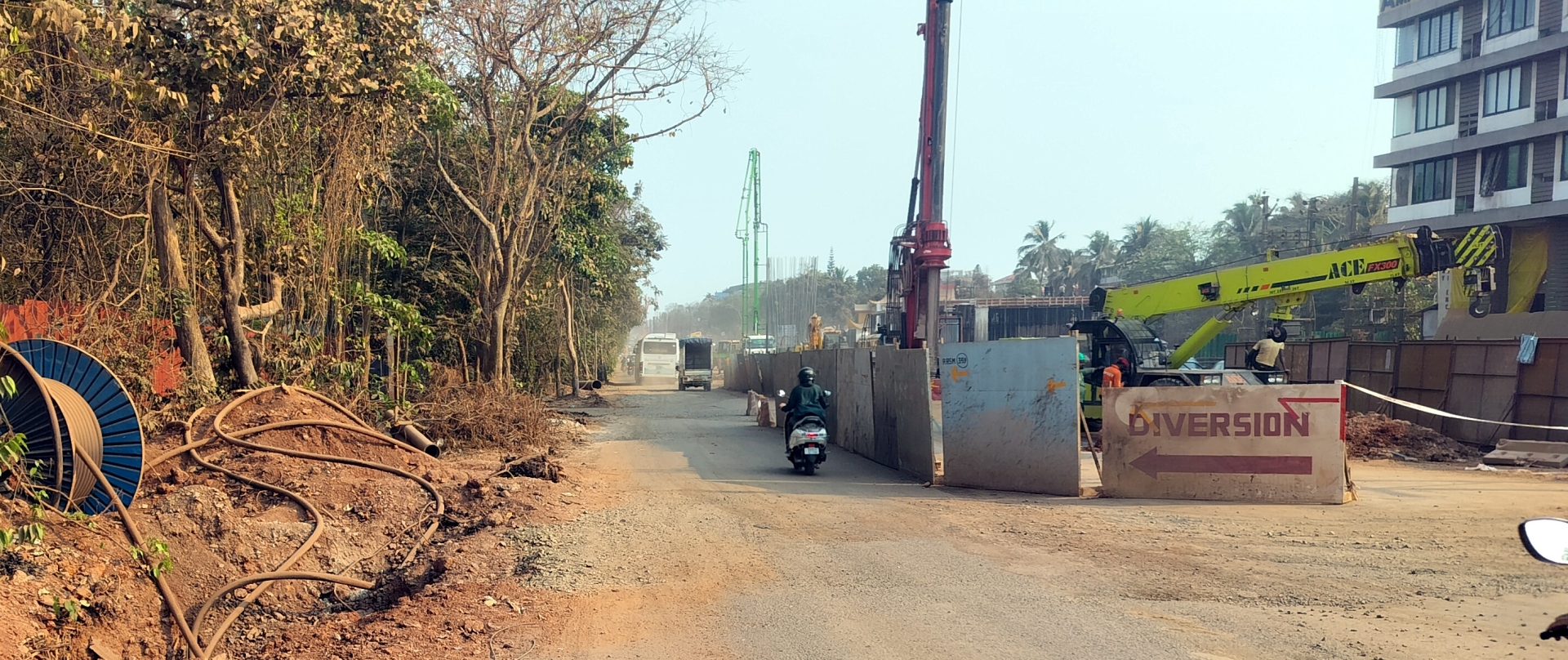Contractor directed to start drain work near Holy Family Church

ENSURING INFRA BEFORE MONSOON: Construction of permanent service roads and drains along the NH stretch in Porvorim, where the elevated corridor is taking shape, is a top priority before the rainy season.
Photo Credits: Agnelo Pereira
MAPUSA
The Public Works Department (PWD) has announced that construction of permanent service roads and drainage systems along the Porvorim flyover will commence after April 15, once work on the piers is completed.
The current service roads, which were built as a temporary measure to facilitate traffic movement, will be replaced with permanent service roads measuring 7.5 metres in width on either side of the piers.
Executive Engineer of PWD, Jude Carvalho, stated that the project must be completed before the onset of the monsoon.
“To begin work on drains, the permanent service roads must first be completed. The temporary roads will need to be dismantled to facilitate the construction of drains and ducts,” Carvalho explained.
He emphasised that the drainage system is a key priority to prevent flooding, which could otherwise lead to waterlogging in residential compounds and sumps.
Recognising the vulnerability of certain areas, Carvalho revealed that the contractor has been directed to start drain work near the Holy Family Church first, as it is particularly prone to flooding during heavy rains.
PWD officials are also mindful of an intervention petition filed before the High Court, highlighting the absence of an adequate drainage system along the route, which has led to significant flooding and inconvenience for residents and commuters in previous years.
Carvalho further noted that if the contractor is unable to commence work on the drains as planned, the original drainage system will have to be restored to mitigate any potential flooding.
Regardless of the approach, completion of the permanent service roads remains a prerequisite.
As an alternative, officials are also considering a complete closure of the NH stretch between Damian de Goa and O’Coquiero Junction to facilitate the construction of service roads and drainage systems.
“Even during the launching of segments, closing the road stretch is advisable to prevent accidents,” Carvalho added.
Additionally, the permanent service roads will include a landscaped median as part of the overall development plan.
Meanwhile, nearly all piers for the elevated corridor have been completed, except for 10 piers near the site of the relocated banyan tree.
These are expected to be finished by mid-April, paving the way for the next phase of construction.